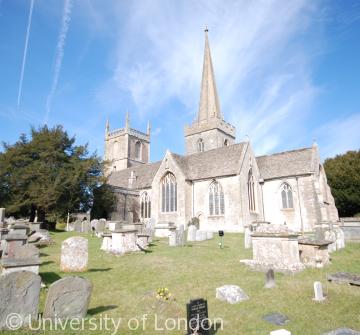Religious Life and Buildings
 The striking parish church of St Mary the Virgin in Purton, Wiltshire
The striking parish church of St Mary the Virgin in Purton, WiltshireThe history of religion in
Even so, that is not the whole story. Paganism remained dominant in many Anglo-Saxon kingdoms until at least the 7th century, and at popular level semi-pagan folk beliefs persisted beyond the Middle Ages, often grafted onto orthodox Christianity. A large Jewish community existed in
For those brought up in a secular society, it can be hard to appreciate the extent to which religious belief moulded mental outlooks and permeated daily life until the relatively recent past. For much of the past millennium, the Established Church (whether Catholic or Protestant) formed a compulsory society and belief-system into which everyone was born, reinforced by the apparatus of the state. Church courts regulated all aspects of moral as well as religious behaviour until the 17th century and sometimes later, with those accused of even minor misdemeanours suffering public penance and sometimes corporal punishment before the whole parish community.
From the 1660s tolerance of differing religious outlooks was gradually enshrined in national legislation, but even Dissenters still had legal and financial obligations. Payment of church rates and tithe became a particular cause of friction, and although from 1836 tithe was commuted into a form of land tax, tithe-related payments were not finally abolished in
Atheism, though espoused by some intellectuals in the wake of the Enlightenment, remained virtually unheard of, and still had the power to shock even in the 19th century. A famous example is the poet Shelley, who was expelled from
The growth of organised nonconformity is similarly traceable in the geography of surviving chapels, from the small 17th-century meeting houses sometimes adapted from houses or barns, through to the imposing 19th-century edifices found in some major towns or market centres. More recent changes are reflected in the variety of religious buildings seen in some of our most ethnically diverse towns and cities, for example










